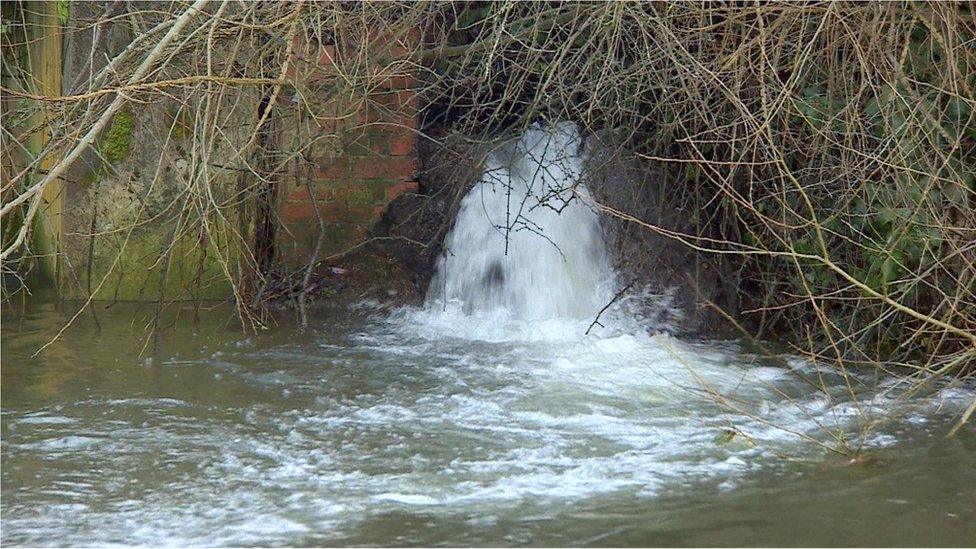Sewage pumped into Cotswold river for more than 1,000 hours
- Published
- comments
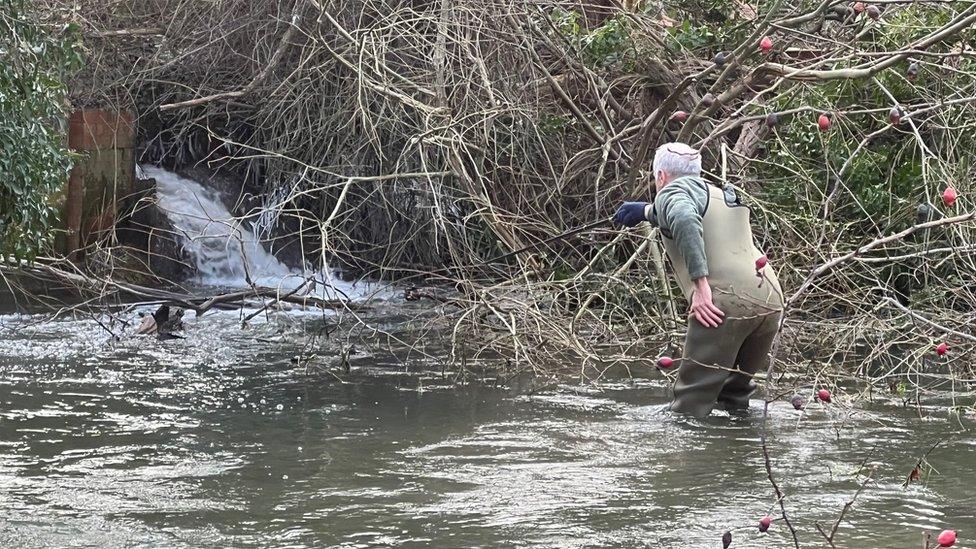
A water campaigner films a pipe pumping raw sewage mixed with treated waste into the River Coln
Untreated sewage has been pumped non-stop into a river for more than 44 days, according to water company data.
The sewage works at Fairford, Gloucestershire, pumps raw sewage into the River Coln when it cannot cope with the volume of water reaching it.
"You just don't want to be wading around in someone else's sewage," said Ashley Smith, a campaigner.
Thames Water insisted that discharging untreated sewage was the only way to stop sewage flooding people's homes.
Ashley Smith loves rivers, and loves pulling on his waders to get into them. But when I met him on the banks of the River Coln just outside Fairford, he was wrinkling his nose.
"Smelly isn't it?" he said, pointing to the pipe on the other bank.
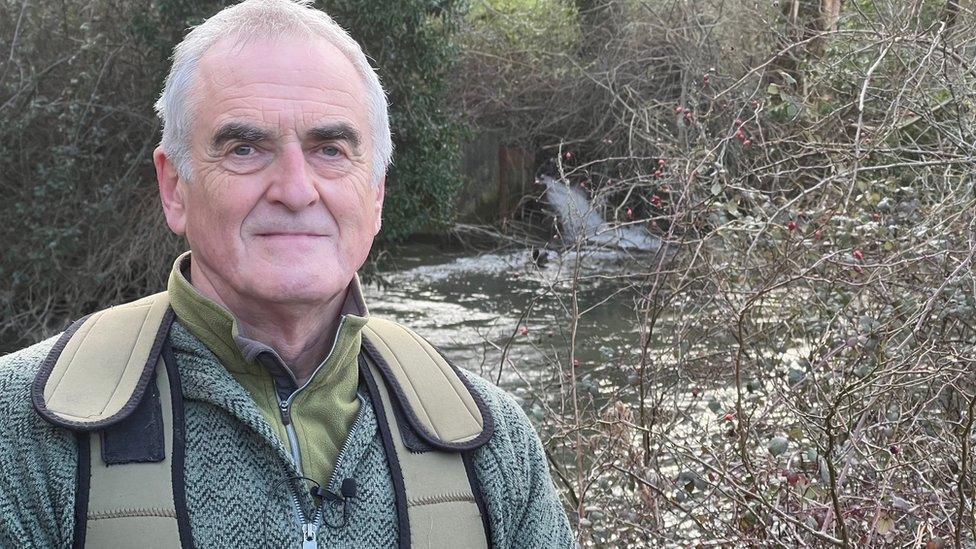
"It's unacceptable", said water campaigner Ashley Smith
Water gushed out into the river, swirling and foaming.
It's not clean water. It comes straight from the treatment works in Fairford - nestled between Cirencester and Swindon - untreated.
Mr Smith wades over to it, an underwater camera on a stick in his hand.
He's been coming for three years now, to take measurements.
The pipe has been pumping sewage water into the river continuously since 3 December.
And it is not an isolated incident.
"Altogether this station has pumped sewage for well over 3,000 hours in the last year," he explains.
"That's over 141 days."
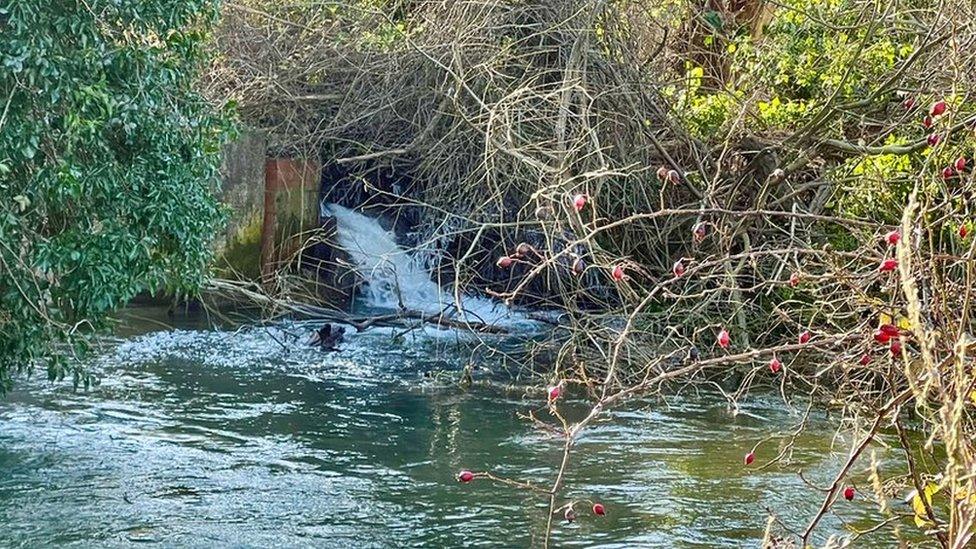
Untreated sewage went into the River Coln for 141 days last year
Mr Smith helps run a campaign group called Windrush Against Sewage Pollution, external, who study how often water companies pump sewage into rivers.
He says: "If this was exceptional circumstances and we were in a big storm, we get it. But it's not.
"This is going on routinely now, and has become part of Thames Water's business model."
Thames Water told me the firm is "sorry" about the discharges, which they regard as "unacceptable."
But they insist that for the moment, they have no choice.
A spokesperson said: "The overflows are designed to operate automatically when the sewer network is about to be overwhelmed which then releases diluted wastewater into rivers, rather than letting it back up into people's homes."
But Bridget Barnett and her husband Peter tell me a different tale.
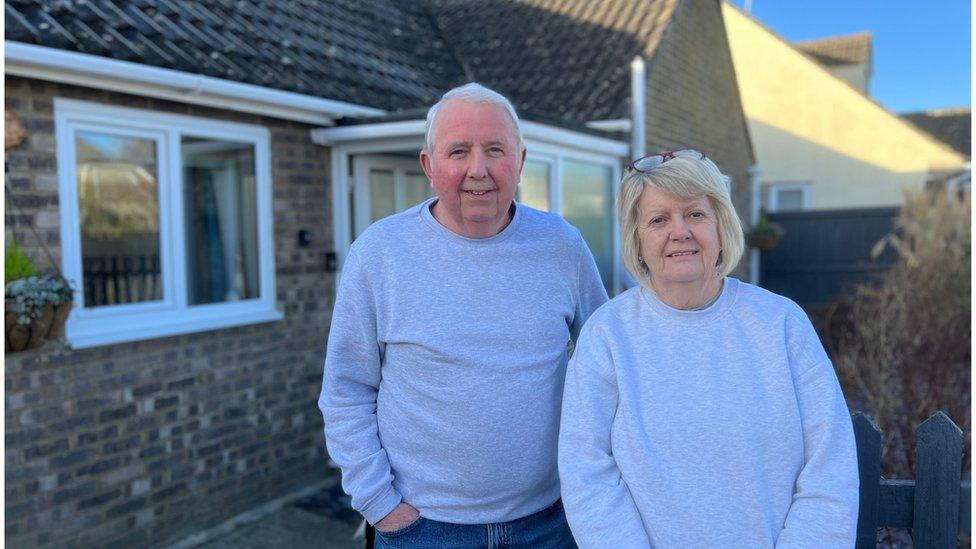
Bridget and Peter Barnett have been flooded by sewage coming up through the toilet
Their house has been flooded three times in the last year.
And not by rainwater coming through the doors, or floods rushing down the street.
Their floods come up through the manholes, full of sewage.
They have even been flooded through their toilet.
"I flushed it, and it rose up and came straight over the top," Mrs Barnett tells me.
"So we then had other people's sewage flooding our bathroom."
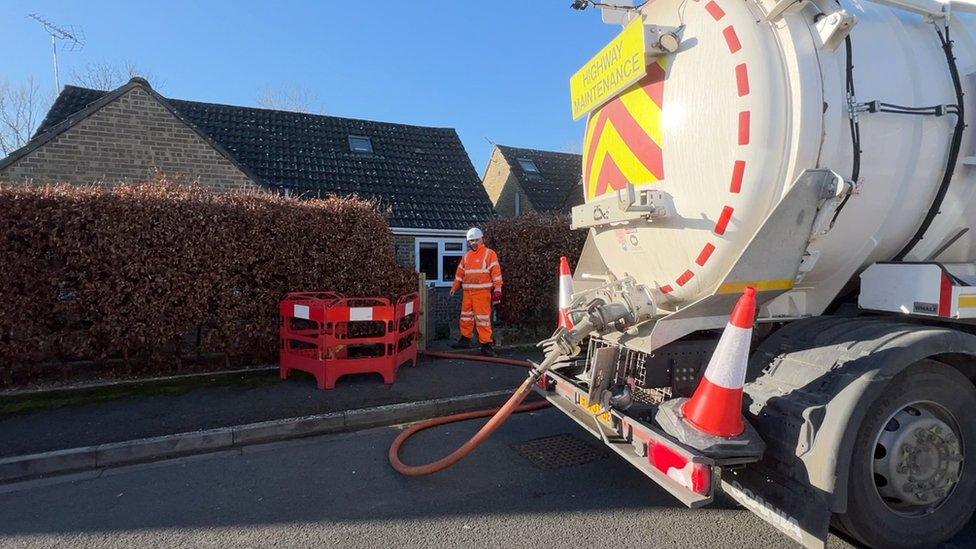
A tanker pumps sewage from houses in Fairford flooded through sewers
When I called on the couple, a big water company tanker was outside. It was pumping out their sewage.
Their house now has a "bung", which blocks it off from the main sewer network.
Twice a day, a tanker comes to empty their tank of bathroom waste, water from the washing machine, and kitchen waste water.
The couple's road is a cul-de-sac, and they have discovered they also live on a sewage cul-de-sac.
When the main sewer from the village is full of rainwater, like it is now, the sewer from their road can't empty into it, the pressure is too great.
So the sewage backs up to the houses, and then floods through the toilets.
Until the pressure on the pumping station eases, they will rely on daily tanker visits.

Councillor Tristan Wilkinson is campaigning to get the sewage works upgraded
Their local councillor, Tristan Wilkinson, came to call on them too.
He was appalled at what they have endured.
"Nobody should have to live in fear of flushing their toilet," he said.
But their situation won't improve until the main sewage works at Fairford is upgraded.
There are plans to enlarge it, so it can handle a lot more sewage and rainwater.
Thames Water confirmed this will be done sometime between 2025 and 2030.
Mr Wilkinson thinks that is too slow.
He said: "We could be here for another six years with the same problem only getting worse, year on year as more houses are built and the impact of climate change continues to increase rainfall and flooding.
"I want action now, and I want this fixed."
This story is repeated across the country after periods of heavy rainfall.
Fairford is only unusual in having sewage pumped into its river for so long, 1,070 hours and counting.
You can see the live data from its sewage works, and others in Thames Water's area, on this map, external.
We reported on the exact same story a year ago, when the Fairford pipe had passed 650 hours.
Mr Wilkinson said: "We shouldn't be here telling you the same thing a year on - but I fear we will be back again next year, unless something dramatic happens."

Follow BBC West on Facebook, external, X, external and Instagram, external. Send your story ideas to: bristol@bbc.co.uk , external
- Published16 January 2023
